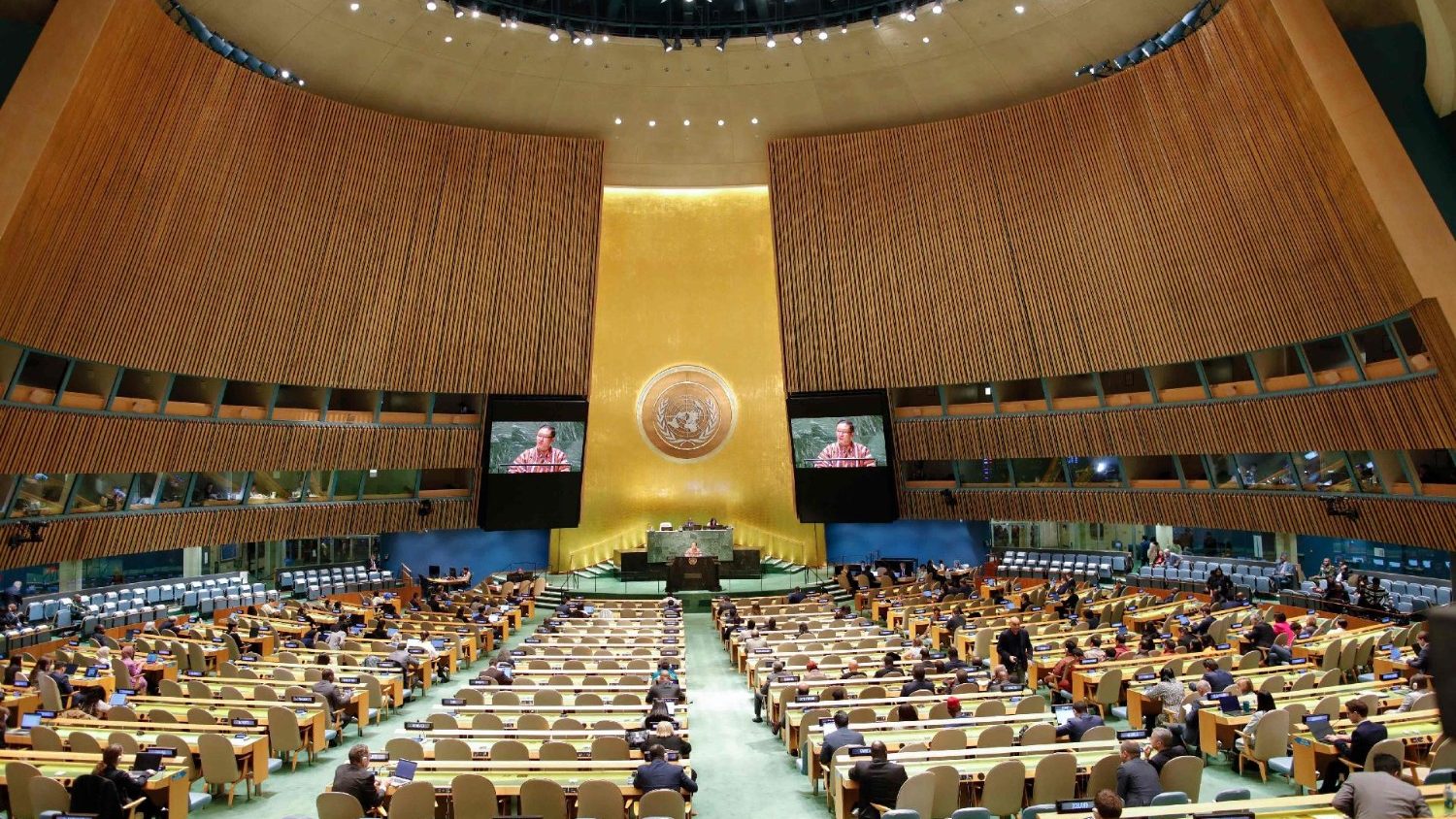Holy See: International cooperation needed to tackle crimes against humanity – Vatican News
Holy See: International cooperation needed to tackle crimes against humanity Vatican News - English


Sustainable Development Goals and Crimes Against Humanity

At the 78th UN General Assembly, the Holy See supports new measures to address crimes against humanity, asking that they be extended to prevent individuals from being extradited to countries where they risk torture or the death penalty.
Introduction
Archbishop Gabriele Caccia, the Permanent Observer of the Holy See to the United Nations, spoke yesterday at the 78th session of the organisation’s General Assembly in New York.
The Italian Archbishop emphasised the Church’s support for “a universal, multilateral, legally binding instrument” on the prevention of crimes against humanity. This would, he said, be a means of “upholding the dignity of every human person, promoting international cooperation and ending impunity for perpetrators.”
At the same time, Archbishop Caccia noted, given that it would be vital for any such Convention to be universally adopted, it is crucial that, when defining crimes, it “follow scrupulously the existing customary norms, without seeking to innovate.”
Safeguarding Prisoners
In a separate speech to the same General Assembly, the Archbishop also reflected on the importance of safeguarding prisoners.
In a speech read aloud by Msgr. Robert Murphy, Vice-Permanent Observer of the Holy See to the UN, he welcomed Draft Article 5, which proposes that no person be returned to a jurisdiction where they would be in danger of suffering a crime against humanity.
This article, the Archbishop said, should be extended to ensure that “no person is extradited to a jurisdiction where he or she would be in danger of being subjected to torture or to the death penalty.”
Archbishop Caccia also welcomed Article 11, which discusses fair treatment of perpetrators and respect for international human rights obligations.
This article too, however, he said, should also be extended to promote “both the reintegration of the offenders and their reconciliation with society.”
“In particular,” the Archbishop said, “offenders must have access to religious ministers who may assist them in making amends for their crimes.”
The Death Penalty
In a third speech, also read by Msgr. Murphy, Archbishop Caccia stressed that, if the Convention on human rights is to be adopted, it must contain safeguards to avoid conflict with “the duty of States to uphold the right to life, to prevent torture and to respect other fundamental human rights.”
He thus expressed the Church’s support for the wording of Draft Article 13(7), which allows States that have abolished the death penalty not to extradite alleged offenders if they may be subject to the death penalty.
“Similarly,” he emphasised, “those States which maintain the death penalty in their legislation but do not apply it in practice should be able to refuse extradition on the same basis.”
SDGs, Targets, and Indicators
-
SDG 16: Peace, Justice, and Strong Institutions
- Target 16.1: Significantly reduce all forms of violence and related death rates everywhere
- Target 16.3: Promote the rule of law at the national and international levels and ensure equal access to justice for all
- Target 16.6: Develop effective, accountable, and transparent institutions at all levels
- Indicator 16.1.1: Number of victims of intentional homicide per 100,000 population, by sex and age
- Indicator 16.3.1: Proportion of victims of violence in the previous 12 months who reported their victimization to competent authorities or other officially recognized mechanisms
- Indicator 16.6.2: Proportion of population satisfied with their last experience of public services
-
SDG 10: Reduced Inequalities
- Target 10.2: By 2030, empower and promote the social, economic, and political inclusion of all, irrespective of age, sex, disability, race, ethnicity, origin, religion, or economic or other status
- Indicator 10.2.1: Proportion of people living below 50 percent of median income, by age, sex, and persons with disabilities
-
SDG 3: Good Health and Well-being
- Target 3.8: Achieve universal health coverage, including financial risk protection, access to quality essential healthcare services, and access to safe, effective, quality, and affordable essential medicines and vaccines for all
- Indicator 3.8.1: Coverage of essential health services (defined as the average coverage of essential services based on tracer interventions that include reproductive, maternal, newborn, and child health, infectious diseases, non-communicable diseases, and service capacity and access)
Analysis
1. Which SDGs are addressed or connected to the issues highlighted in the article?
The issues highlighted in the article are connected to SDG 16 (Peace, Justice, and Strong Institutions), SDG 10 (Reduced Inequalities), and SDG 3 (Good Health and Well-being).
2. What specific targets under those SDGs can be identified based on the article’s content?
Based on the article’s content, the specific targets that can be identified are:
– Target 16.1: Significantly reduce all forms of violence and related death rates everywhere
– Target 16.3: Promote the rule of law at the national and international levels and ensure equal access to justice for all
– Target 16.6: Develop effective, accountable, and transparent institutions at all levels
– Target 10.2: By 2030, empower and promote the social, economic, and political inclusion of all, irrespective of age, sex, disability, race, ethnicity, origin, religion, or economic or other status
– Target 3.8: Achieve universal health coverage, including financial risk protection, access to quality essential healthcare services, and access to safe, effective, quality, and affordable essential medicines and vaccines for all
3. Are there any indicators mentioned or implied in the article that can be used to measure progress towards the identified targets?
Yes, there are indicators mentioned or implied in the article that can be used to measure progress towards the identified targets. These indicators include:
– Indicator 16.1.1: Number of victims of intentional homicide per 100,000 population, by sex and age
– Indicator 16.3.1: Proportion of victims of violence in the previous 12 months who reported their victimization to competent authorities or other officially recognized mechanisms
– Indicator 16.6.2: Proportion of population satisfied with their last experience of public services
– Indicator 10.2.1: Proportion of people living below 50 percent of median income, by age, sex, and persons with disabilities
– Indicator 3.8.1: Coverage of essential health services (defined as the average coverage of essential services based on tracer interventions that include reproductive, maternal, newborn, and child health, infectious diseases, non-communicable diseases, and service capacity and access)
SDGs, Targets, and Indicators
| SDGs | Targets | Indicators |
|---|---|---|
| SDG 16: Peace, Justice, and Strong Institutions |
|
|
| SDG 10: Reduced Inequalities |
|
|
| SDG 3: Good Health and Well-being |
|








